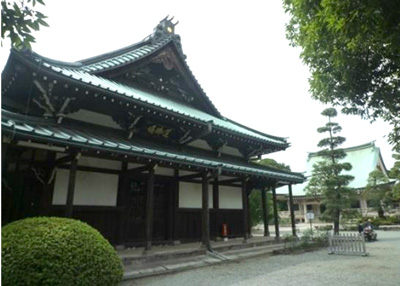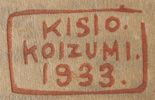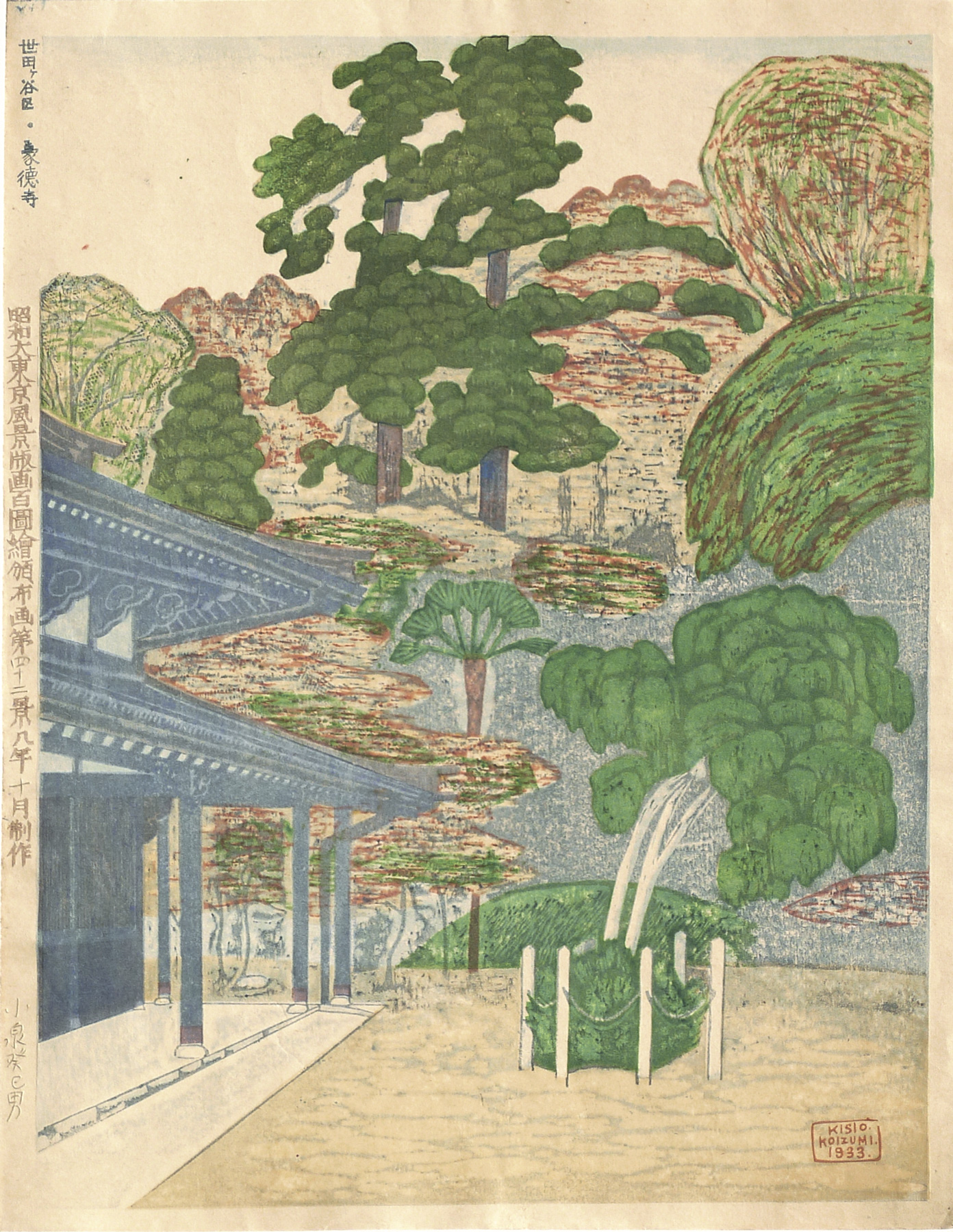About This Print
Number forty-two of the one hundred prints that make up the series Showa dai Tokyohyakuzue (One Hundred Pictures of Great Tokyo During Showa). Koizumi startedthis series in 1928 and completed it twelve years later in 1940. In this print, Koizumi presents us with a view of the gardens surrounding Buddha Hall on the temple grounds of Gōtokuji, the Ii Clan's family temple, where, as is noted by Koizumi (see "artist's Annotations" below), the assassinated Ii Naosuke, Tairō to the Tokugawa Shogun Tokugawa Iesada, is buried.
Artist's Annotation
Source: MIT Visualizing Cultures website http://ocw.mit.edu/ans7870/21f/21f.027/tokyo_modern_02/annotation.htmlIn 1940, Koizumi created woodblock print charts containing print titles, dates, and comments for this series. His comment for this print follows:
“This is the burial place of Lord Ii who was killed atSakuradamon. It is also famous for a literal mountain of cat statues.”
Gōtukuji Temple
Source: website of Virtual Tourist members.virtualtourist.com/m/p/m/218ea4/
"Gotokuji temple, a Soto-sect zen temple in Setagaya-ku, is best known by the legend of Manekineko better known as "lucky cats" or "beckoning cats". It was originally built in 1480 in a part of Setagaya castle ruled by Kira clan. After the temple got ruined after the castle was abandoned during early 17th century Ii Naomasa, the lord of Hikone Castle and had governed former Kira clan areas, decided to rebuilt the temple buildings and expanded the temple premises to the large part of former Setagaya castle. The popular legends say that Naomasa Ii was beckoned into the temple by the cat when the thundershower was about to strike the Naosuke Ii and his men. Nearly hit by the lightening and enjoyed talking with the head priest of the temple, Naomasa decided to rebuild the temple as the place for their family grave. Since then Gotokuji cat has been revered as the deity of bringing luck. The cat figurines production may have started around mid 19th century when having a cat figurine as a lucky charm became popular among yukaku dancers."
| IHL Catalog | #883 |
| Title | Gōtokuji Temple in Setagaya Ward 世田ケ谷区・豪徳寺 - Kanji title upper left margin |
| Series | One Hundred Pictures of Great Tokyo in the Showa Era Showa dai Tokyo hyakuzue 昭和大東京百図絵 |
| Reference Number | #42 (artist's annotated portfolio list from c. 1940 and as hand written and printed in left margin as 第四十二景, "42nd view") |
| Artist | Koizumi Kishio (1893-1945) |
| Signature |  小泉癸巳男 pencil signed in lower left margin |
| Seal | |
| Publication Date | October 1933 (八年十月制作 as hand written and printed in left margin) |
| Edition | unknown |
| Publisher | likely self-published; some sources list publisher as Asahi Press (see "The Publisher of the Series" under the artist's bio Koizumi Kishio.) |
| Impression | excellent |
| Colors | excellent |
| Condition | good - light wrinkling, toning and soiling |
| Miscellaneous | inscriptions along left margin read: 世田ケ谷区・豪徳寺 昭和大東京風景版画百圖絵頒布画 第四十二景 八年十月制作 小泉癸巳男 |
| Genre | sosaku hanga (creative prints) |
| Format | dai oban |
| H x W Paper | 11 5/8 x 16 in. (29.5 x 40.6 cm) |
| H x W Image | 10 7/8 x 14 3/8 x in. (27.6 x 36.5 cm) |
| Collections This Print | Edo Tokyo Museum 95202872; The Wolfsonian at Florida International University TD1993.69.1.62and .63 |
| Reference Literature | Tokyo: The Imperial Capital Woodblock prints by Koizumi Kishio,1928-1940, Marianne Lamonaca, The Wolfsonian-Florida InternationalUniversity, 2004, p. 30, 96. |


